South Africa
Things to DO
Cape Town
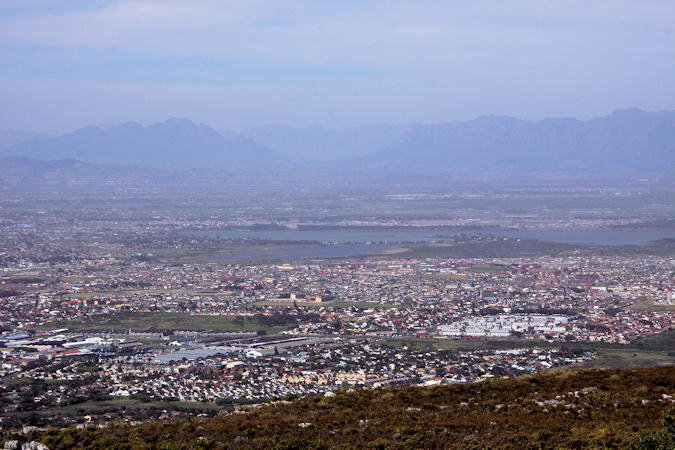 |
|||||
Located on the shore of Table Bay, Cape Town, as the oldest urban area in South Africa, was developed by the United East
India Company (VOC) as a supply station for Dutch ships sailing to East Africa, India, and the Far East.
Jan van Riebeeck's arrival on 6 April 1652 established the VOC Cape Colony, the first permanent European settlement in South
Africa.
Cape Town outgrew its original purpose as the first European outpost at the Castle of Good Hope, becoming the economic and cultural hub of
the Cape Colony.
Cape Town is nicknamed the "Mother City" within South Africa. Compared to the more business oriented Johannesburg it is known for
its relaxed and leisurely atmosphere.
Some jokingly claim that the reason it is called the Mother City is that it takes at least 9 months to get anything done in Cape Town!
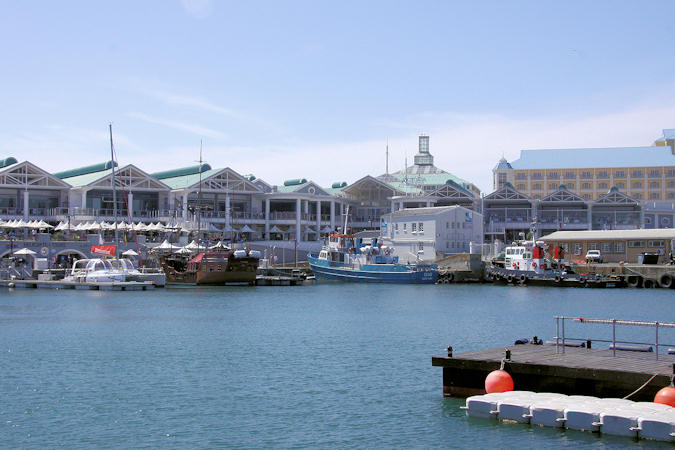 |
|||||
Victoria & Alfred Waterfront
This historic working harbour has a spectacular setting and many tourist-oriented attractions including masses of shops, restaurants, bars,
cinemas and cruises.
Prince Alfred, second son of Queen Victoria, visited the Cape Colony harbour in 1860 as a sixteen-year-old Royal Navy
Midshipman on "HMS Euryalus". He made a big splash with the colonials on this first-ever visit by a member of the Royal Family.
The first basin of the new Navy Yard was named after him and the second after his mother.
Nobel Square
Here's your chance to have your photo taken with Desmond Tutu and Nelson Mandela. The Larger-than-life statues of both man,
designed by Claudette Schreuders, stand beside those of South Africa's two other Nobel Prize winners - Nkosi Albert Luthuli and
FW de Klerk.
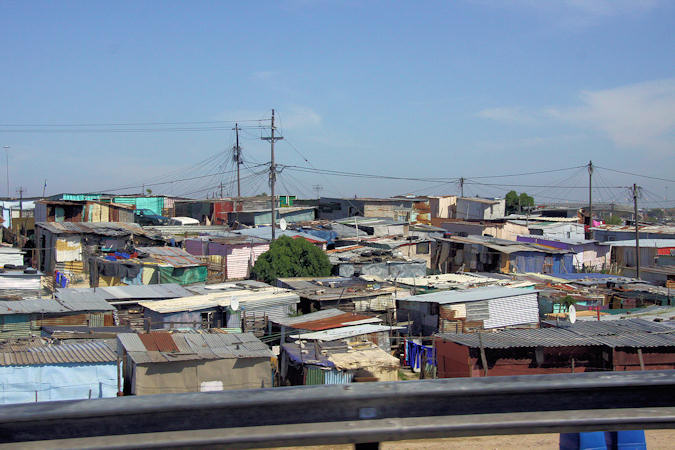 |
|||||
Group Areas Act was the title of three acts of the Parliament of South Africa enacted under the apartheid government of
South Africa. The acts assigned racial groups to different residential and business sections in urban areas in a system of urban
apartheid.
Plans to build Khayelitsha were first announced by Dr Piet Koornhof in 1983, then Minister of Co-operation and Development.
Khayelitsha was one of the apartheid regime's final attempts to enforce the Group Areas Act and was seen as the solution to two problems:
the rapidly-growing number of migrants from the Eastern Cape and overcrowding in other Cape Town townships.
Baphumelele Children's Home was founded in 2001 by Rosie Mashale as a refuge and place of safety for orphaned and other
vulnerable children from the Cape Flats. The home is one of the first in the township of Khayelitsha, one of the largest in South Africa.
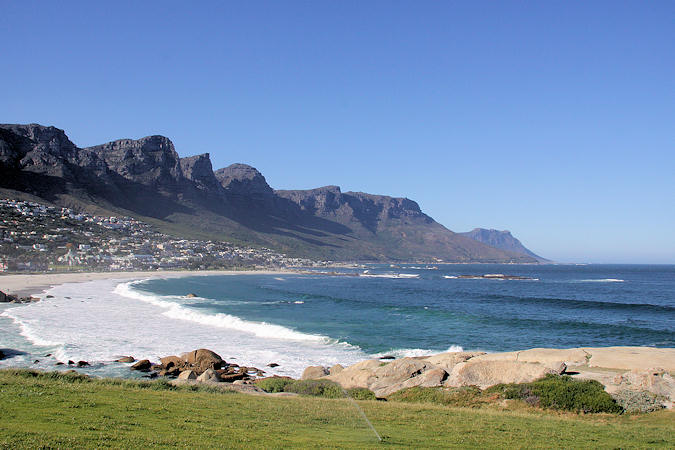 |
|||||
Clifton Beaches
Giant granite boulders split the four linked beaches at Clifton, accessible by steps from Victoria rd.
Almost always sheltered from the wind, these are Cape Town's top sunbathing spots.
Boulders Beach
This pictureque area with a number of enormous boulders dividing sandy coves is home to a colony of 2.800 African Penguins.
A boardwalk runs from the visitors centre at the Foxy Beach end of the protected area to Boulders Beach, where you can get down onto
the sand and mingle with the waddling penguins.
The sea is calm and shallow in the coves, so Boulders is popular with families and can get extremly crowded, especially on holidays
and at weekends.
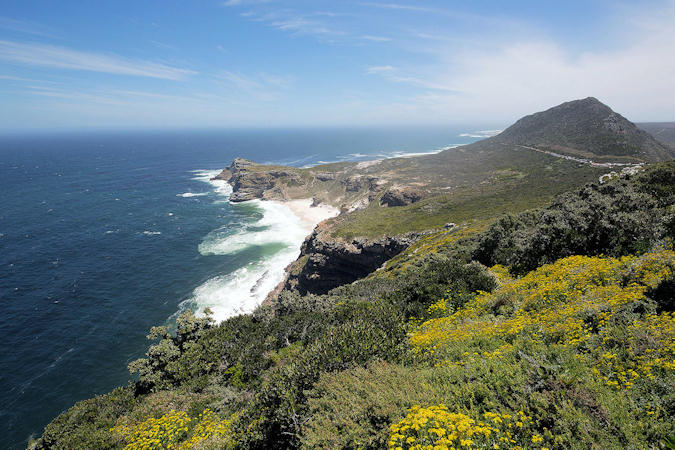 |
|||||
Cape of Good Hope
Commonly called Cape Point this 7.750-hectare section of Table Mountain National Park, includes awesome scenery, fantastic walks
and often deserted beaches.
Some 250 species of birds live here, including cormorants and a family of ostriches that hang out near the Cape of Good Hope,
thesouthwesternmost point of the continent.
Mamals species include mountain zebra, bontebok, chacma baboon caracal and rock hyrax.
It's not a hard walk uphill to the old lighthouse, dating from 1860. A 1 km trail runs from here to its successor.
Ignore the signs; it takes less than 30 minutes to walk, along a spectacular ridge-way path to look down on the new lighthouse and the
sheer cliffs plunging into the pounding ocean
Cederberg Wilderness Area
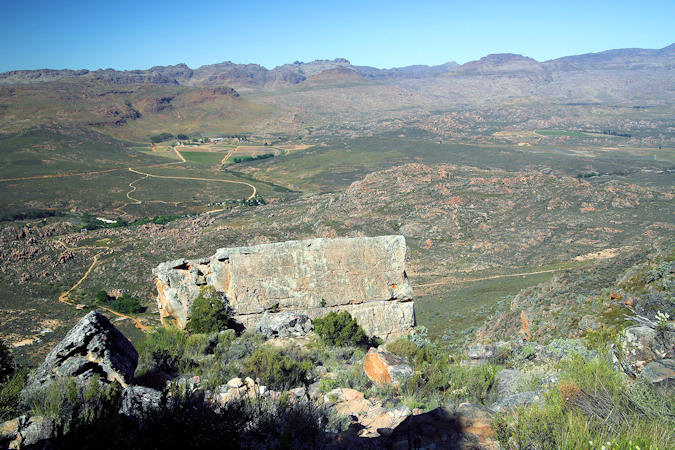 |
|||||
The Cederberg Wilderness Area lies some 250km north of Cape Town, stretching from the Middelberg Pass at Citrusdal to north
of the Pakhuis Pass at Clanwilliam and encompassing some 71.000ha of rugged, mountainous terrain.
It is renowned for its spectacular landscapes and rock formations as well as the in creasingly rare Clanwilliam cedar tree, from which
it got its name.
San and Khoi people inhabited the Cederberg area from earliest times. European settlers began stock farming here in the early
eighteenth century and from 1903 to 1973, exploitation of natural products was rampant.
Large amounts of cedarwood, rooibos tea, buchu and rockwood bark were harvested. Fires added to the destruction and cedar trees are now
on the brink of extinction.
The Cederberg Wilderness Area was proclaimed a wilderness in 1973 and received World Heritage status in 2004.